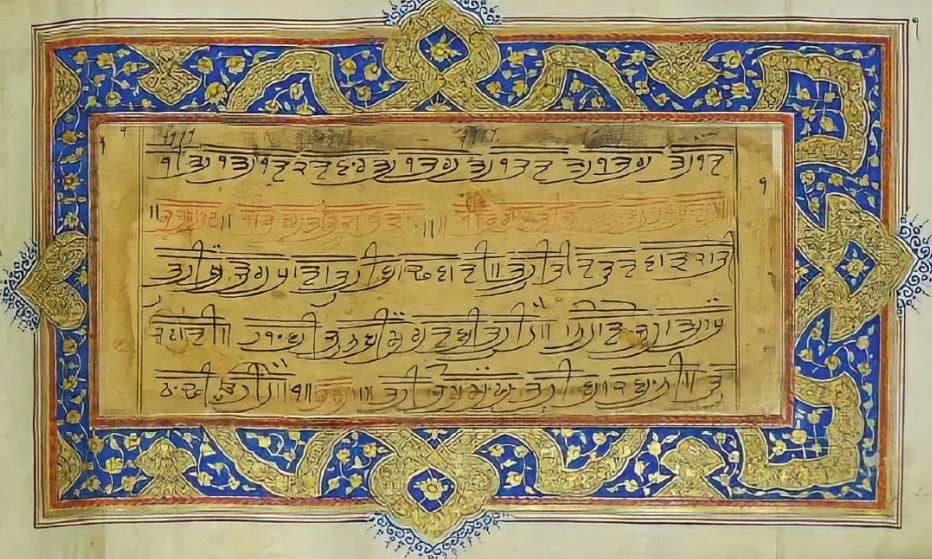Introduction to Charithropakhyan

ੴ ਸਤਿਗੁਰਪ੍ਰਸਾਦਿ
Ik Oan[g]kaar SathiGurPrasaadh[i]
Thank you to Bibi Sundar Kaur for carrying out this seva!
SikhTranslations are simply hosting & editing this post based on our website's formatting.
~Aaeenaa
Sri Charithropakhyan (ਚਰਿਤ੍ਰੋਪਖਯਾਨ) is a Gurbani written by Dhan Dhan Sri Guru Gobind Singh Ji Maharaj containing 405 stories on how the ਵਿਕਾਰਾਂ (vices): ਕਾਮ (Lust) , ਕ੍ਰੋਧ (Anger), ਲੋਭ (Greed), ਮੋਹ (Emotional Attachment), ਅਹੰਕਾਰ (Ego) destroy an individual's personal and political life.
The word ਚਰਿਤ੍ਰੋਪਖਯਾਨ can be broken into two parts:
ਚਰਿਤ੍ਰ = Wondrous Play, Acts, State, Conduct, can also mean painting |
ਪਖਯਾਨ = Katha, Series of Stories |
(as defined by Mahaan Kosh)
Thus, the literal meaning is: ‘Series of Stories about the Painting [called the World] or Stories about [people's] conduct/actions ’.
All of these stories are communicating a message to the reader
(ਗੁਰੂ ਖ਼ਾਲਸਾ ਪੰਥ/Guru Khalsa Panth) on how to battle these vices.
First Charittar
ਤੁਹੀ ਖੜਗਧਾਰਾ ਤੁਹੀ ਬਾਢਵਾਰੀ ||
Thuhee Kharrag-Dhhaaraa Thuhee Baatdvaaree
You are the Wielder of the Kharrag-Sword,
You are the Wielder of the Sharp Sword!
ਤੁਹੀ ਤੀਰ ਤਰਵਾਰ ਕਾਤੀ ਕਟਾਰੀ ||
Thuhee Theer Tharvaar Kaathee Kataaree
You are the Arrow/Projections, the Sword, and the Daggers!
ਹਲਬੀ ਜੁਨਬੀ ਮਗਰਬੀ ਤੁਹੀ ਹੈ ||
Halbee Junbee Magarbee Thuhee Hai
You are the Sword from Halab (Aleppo, Syria),
the Sword from Janab (Armenia),
the Sword from Iran (referred to as Maghrabee)
ਨਿਹਾਰੌ ਜਹਾ ਆਪੁ ਠਾਢੀ ਉਹੀ ਹੈ || ੧ ||
Nihaarau Jahaa Aap[u] Ttaatdee Ouhee Hai
Where I look, there You are standing!
This Charithar features the Mangal (Invocation) for Sri Charitropakhyan. Guru Sahib Ji [commences] by doing ਆਰਾਧਨਾ(Focus) & ਉਸਤੱਤ(Praise) of Akaal Purakh. [Vaheguru] comes in the form of ਭਗੌਤੀ/Bhagauthee, ਕਿਰਪਾਨ/Kirpaan, and ਮਾਇਆ/Maya. Guru Sahib Ji does ਨਮਸਕਾਰ (Reverence/Bowing) to Akaal Purakh.
Background/Other Info


Mahraaj has also marked the date of completion of Charitropkahyan, according to the bikrami calendar:
ਚੌਪਈ || Chaupaee
ਸੰਬਤ ਸੱਤ੍ਰਹ ਸਹਸ ਭਣਿੱਜੈ ||
Sa[m]bath Sathrah Sahas BhaNijai
ਅਰਧ ਸਹਸ ਫੁਨਿ ਤੀਨਿ ਕਹਿੱਜੈ ||
Ardhh Sahas Phun[i] Theen[i] Kahijai
ਭਾਦ੍ਰਵ ਸੁਦੀ ਅਸਟਮੀ ਰਵਿ ਵਾਰਾ ||
Bhaadhrav Sudhee Astamee Rav[i] Vaaraa
ਤੀਰ ਸਤੁੱਦ੍ਰਵ ਗ੍ਰੰਥ ਸੁਧਾਰਾ ||
Theer Sathudhrav Gra[n]thh Sudhhaaraa
TRANSLATION:
ਸੰਬਤ = year | ਸੱਤ੍ਰਹ = 17 | ਸਹਸ = 100 | ਭਣਿੱਜੈ = is stated → in the year 1700 this was written | ਅਰਧ = half (half 100 is 50) | ਫੁਨਿ = then ਤੀਨਿ = 3 (50+3 is 53) |
The lines above – therefore – equate to the year which is 1753 of the Bikrami Calendar (the calendar used primarily at that time, about 57 yrs ahead of our Gregorian Calendar so, 1696 CE) | ਭਾਦ੍ਰਵ = Bhado month | ਸੁਦੀ = waxing phase of the moon ਅਸਟਮੀ = 8th day | ਰਵਿ ਵਾਰਾ = Sunday | ਤੀਰ = the banks | ਸਤੁੱਦ੍ਰਵ = the name of the river (satluj river) | ਗ੍ਰੰਥ ਸੁਧਾਰਾ = this Granth was completed. |
This Granth was completed at the banks of the Satluj River on a Sunday on the 8th Suddi of Bhadhrav.
This poetic method of dating scriptures was quite popular during this time.

